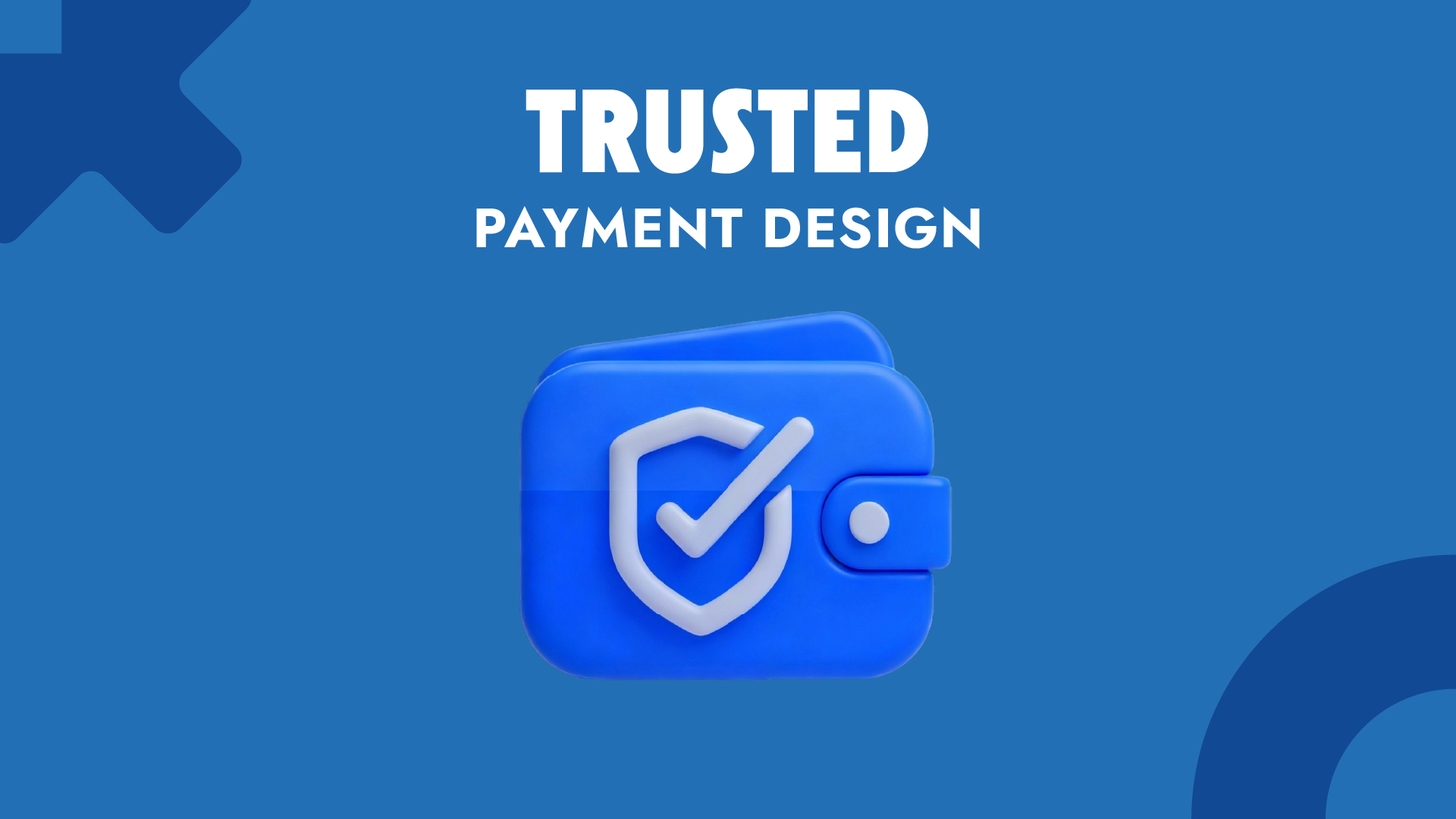In a global market worth tens of billions and built entirely around digital transactions, a well-designed payment system forms the core of every reputable iGaming platform. It’s not just about processing deposits and withdrawals — it’s about creating an experience that feels instant, transparent, and secure.
Operators who fail to meet these expectations risk losing players at the checkout stage and, over time, undermining the reliability and credibility of their entire platform.
In this article, we explore how to design a payment infrastructure that strengthens user trust, improves conversion, and supports long-term retention.
Why Payment UX Is Critical in Online Gambling
In a highly competitive iGaming market, even the smallest friction during payment can quickly drive players away. Delays, unclear messaging, or missing local payment options all contribute to churn — not because the game itself fails, but because the experience around it feels unreliable.
A strong payment design balances three core priorities:
- Speed: deposits and withdrawals should process fast enough to keep momentum and engagement high.
- Transparency: players expect clear, real-time feedback on payment status, limits, and fees.
- Trust: every transaction must be handled securely and verified to protect user funds and data integrity.
Ultimately, payments are more than a technical process — they are a trust signal. A seamless, well-communicated payment flow tells players the platform is reliable, professional, and worth returning to.
Core Principles of Effective Payment System Design
1. User-Centered Architecture
Payment architecture is as much a part of the player experience as the game itself. A confusing or rigid payment flow can erode trust faster than a technical glitch. Designing systems around real user behaviour — not just technical constraints — creates a smoother, more intuitive journey from deposit to withdrawal.
Keep things simple: reduce unnecessary steps, minimise cognitive load, and show information only when it’s relevant. These small design choices help players stay focused and confident.
Trust also grows from the details. Clear, human-readable messages matter. Instead of vague prompts like “Transaction failed”, offer constructive guidance such as “Your bank declined this payment — please try another method.” Every touchpoint is an opportunity to reassure the player that your platform is reliable and transparent.
2. Modular and Scalable Infrastructure
Before entering any new iGaming market, it’s essential to understand which payment methods players actually use. Local habits can vary dramatically — what works in Europe may not work in Latin America or Africa. A modular approach is therefore the smartest choice for any iGaming platform.
By designing a flexible architecture that supports multiple providers and regional preferences, operators can expand their reach exponentially. This approach also simplifies scaling: as user volumes grow, or as new regulations emerge, individual components can be updated or replaced without disrupting the entire system.
When implemented correctly, modular payment design lets operators plug in new options — from mobile wallets to cryptocurrencies — without rebuilding the core infrastructure. It’s a future-proof model that combines agility with operational stability.
3. Security by Design
Security isn’t a feature you add at the end — it’s an architecture principle that must guide every integration. In iGaming, where every transaction involves sensitive financial and personal data, trust depends on building protection directly into the system’s core.
That starts with strict compliance to PCI DSS, AML, and GDPR standards — not just to meet regulatory requirements, but to ensure the integrity of every data exchange. Security by design means encrypting data both at rest and in transit, isolating payment modules from game logic, and enforcing least-privilege access across internal APIs.
Other critical layers include:
- End-to-end encryption to prevent data interception.
- Tokenisation to replace card data with secure, non-traceable identifiers.
- Two-factor authentication (2FA) or adaptive MFA (multi-factor authentication) for sensitive actions like withdrawals.
- Continuous fraud monitoring that uses AI to detect unusual betting patterns, payment anomalies, or suspicious player behaviour in real time.
Platforms that prioritise these measures don’t just prevent breaches — they demonstrate accountability. In a market built on financial credibility, that reputation is worth more than any single transaction.
Enhancing Conversion Through UX-Driven Payment Design
In iGaming, every payment interaction is both a conversion opportunity and a potential drop-off point. Even when transactions are technically fast, poor UX can make players hesitate — and hesitation kills momentum.
To boost completion rates and player confidence, focus on four key UX principles:
- Reduce friction: Allow users to save their preferred payment methods securely and repeat transactions in one click.
- Simplify repetition: Use safe autofill for returning players to cut down on manual data entry.
- Keep visual consistency: Match the style and layout of the main platform — when the checkout feels familiar, players are more likely to trust it.
- Provide real-time feedback: Micro-interactions such as progress bars, confirmation ticks, or brief success animations reassure users that payments are being processed correctly.
Every second of uncertainty raises the chance of abandonment. A clear, responsive, and visually consistent payment experience does more to drive conversion than speed alone.
Supporting Multiple Payment Methods
Players want to feel at home when they gamble online. That sense of comfort often starts with payment familiarity — being able to deposit and withdraw using methods they already trust. Localised options like Pix in Brazil, M-Pesa and Airtel Money in Africa, or mobile wallets in Southeast Asia can make or break a player’s decision to complete a transaction.
To maximise accessibility, platforms should combine both traditional and local payment methods — from credit and debit cards to e-wallets, bank transfers, and regional mobile money solutions. Flexibility doesn’t just improve conversion; it shows players that the platform understands their market.
Some providers, like PlaylogiQ, offer highly customisable payment integrations, allowing operators to add or modify methods quickly to fit their audience. This level of adaptability reduces time-to-market and helps build lasting trust with players across different regions.
Data-Driven Optimization and Monitoring
Payment performance should never be treated as a “set it and forget it” system. Real-time monitoring helps operators identify friction points and react before they affect players or revenue. The goal isn’t just to collect data — it’s to translate it into better experiences.
Key metrics worth tracking include:
- Transaction success rate: reveals system stability and processing efficiency.
- Time-to-completion: measures how long users wait from initiation to confirmation.
- Drop-off rates at each step: pinpoint UX bottlenecks in the payment flow.
- Fraud alerts and chargeback frequency: indicate risk exposure and trust performance.
When combined with behavioural insights, these metrics become a roadmap for continuous optimisation. They help refine UX, strengthen fraud prevention, and ensure the platform evolves in line with player expectations and shifting regulatory standards.
Building a Foundation for Long-Term Growth
As we’ve seen throughout, the future of payment systems in iGaming can be summed up in one word: adaptability. Markets evolve, player expectations shift, and technologies like embedded wallets, open banking, and crypto payments are redefining what “instant” really means.
In this landscape, flexibility isn’t a luxury — it’s a survival factor. Platforms that combine stable architecture with agile integrations can adapt faster to local regulations, new currencies, and changing player habits. That agility turns complexity into opportunity.
Strong payment design is ultimately about more than technology — it’s about psychology. When users feel safe, in control, and understood, they stay longer, deposit more, and trust the platform behind every transaction.
In iGaming, payments are no longer a back-end function — they’re a strategic growth driver. Operators who treat them as such will lead the next chapter of the industry.


